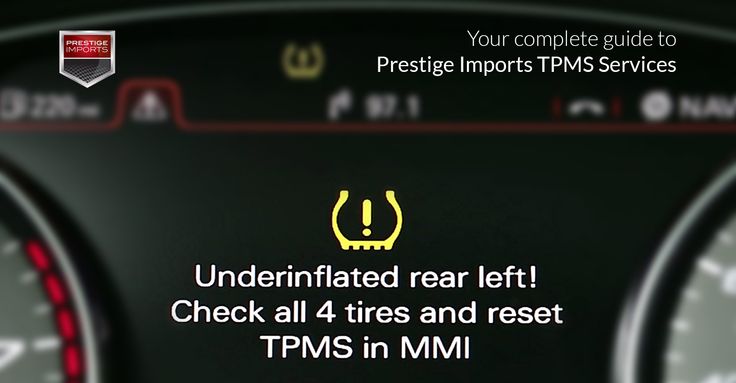When your tire is underinflated, an icon, horseshoe-like with an exclamation point, illuminates on the gauge cluster of your car’s dashboard. The technology responsible for giving out this alert is the tire pressure monitoring system (TPMS).
The TPMS gets information regarding their air pressure level from sensors. Depending on the type of TPMS installed in your car, the system may be relying on air pressure sensors inside your tires or the anti-lock brake system wheel speed sensors.
Why Do People Opt to Disable Their Tire Sensors?Clearly, these sensors are critical for your TPMS to work. But why do some car owners choose to disable their tire sensors?
First, you have to understand that sensors need to be in tiptop condition and mounted properly as well as reset accordingly to avoid false underinflated or overinflated tire alerts.
Yes, you read that right! Your TPMS may warn you that one of your tires do not have the correct air pressure level even if there is no real issue. There are various reasons for this, but the problem has something to do with the sensors most of the time.
For example, the TPMS warning light turns on when a relearn is not done after replacing your flat tire. In this situation, the system is still getting signals from the replaced underinflated tire instead of the new one. This is why you get an alert that you have a flat tire.
False TPMS warning alerts rarely indicate a major issue with your vehicle – one that diminishes its roadworthiness and threatens your safety. However, dealing with them can be inconvenient, annoying and even expensive since you might need professional help to resolve the issue.
These false alerts can also be distracting as the warning light stays on until the issue is resolved. This can be dangerous since a distracted driver is more likely to get in a car collision.
Inconvenience, annoyance, additional expense and safety hazards – these are just some of the reasons why a handful of car owners are disabling their TPMS.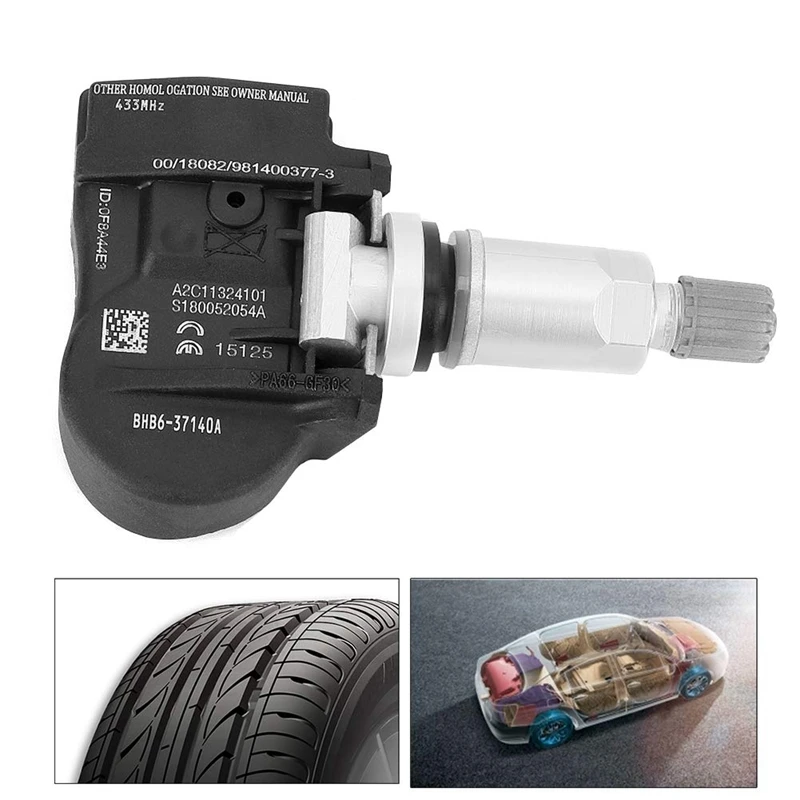
When people ask about disabling their tire sensors, what they actually want to know is if there’s a fuse that can turn off the TPMS.
Currently, the tire pressure monitoring systems installed in vehicles do not have an on/off button. Similarly, cars do not have a built-in fuse to stop sensors from transmitting information to the electric control module (ECM).
Due to the absence of an on/off switch, some employ crude methods to disable their TPMS.
For example, some choose to remove one of the sensors or forego buying a replacement when it gets damaged. It should be noted, though, that these options do not turn off the TPMS. In fact, doing these things is going to cause the warning light to stay on.
Others resort to putting black tape on the icon to resolve the issue of having an illuminated TPMS warning light. This way, they no longer see it and get distracted.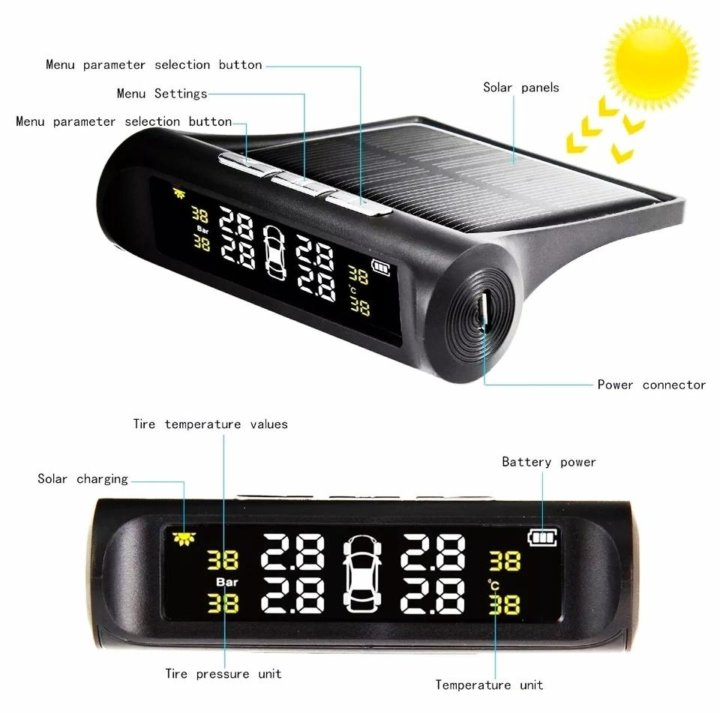
You are going to find other proposed methods of disabling the TPMS. But unlike the one mentioned above, these methods would require you to tinker with your car’s wirings or ECM. Apart from being complicated, these options can be risky because they can compromise the roadworthiness of your vehicle.
Simple and Easy Way to Disable Your Tire SensorsNow, is there a better way of turning off your TPMS?
Yes, there is a sophisticated yet non-invasive method of disabling your tire pressure monitoring system. All you have to do is use an emulator designed to bypass the TPMS.
The TPMS bypass emulator is a small box-like device equipped with technology to “turn off” your tire pressure monitoring system. Once it is activated, you don’t have to worry about the TPMS warning light turning on. Even if you have a damaged sensor or forget to relearn after changing tires, the warning icon is no longer going to light up.
With this device, it is as if you have a TPMS on/off button.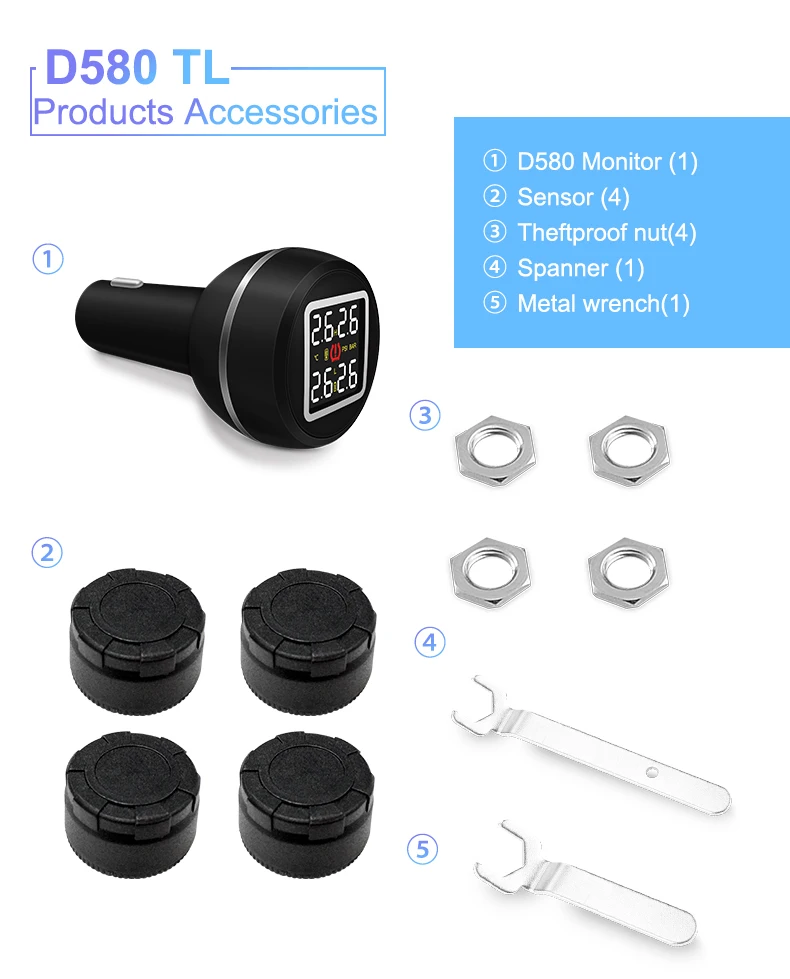 Activate it and keep it in your car to disable the TPMS. Deactivate the device if you want to enable the system and get alerts about your tire’s pressure level.
Activate it and keep it in your car to disable the TPMS. Deactivate the device if you want to enable the system and get alerts about your tire’s pressure level.
It is also worth mentioning that the device won’t require you to manipulate any wires in your car or modify the ECM. So, you don’t have to worry about making alterations that can interfere with the safety and performance of your vehicle.
In summary, you can disable your tire sensors or TPMS. There are different ways to do this, but it is best to choose a non-invasive and failproof method – using a TPMS bypass emulator. However, if you decide to disable your TPMS, make sure that you stay vigilant when it comes to the condition of your tires and regularly check their pressure level.
Want to disable your tire sensors or TPMS? Do it safely and successfully using our bypass emulator! Visit our website to view our products!
Systems such as these are essential for on-road safety and that is why both the US and the EU require all new cars to come fitted with TPM sensors directly from the factory for more than a decade.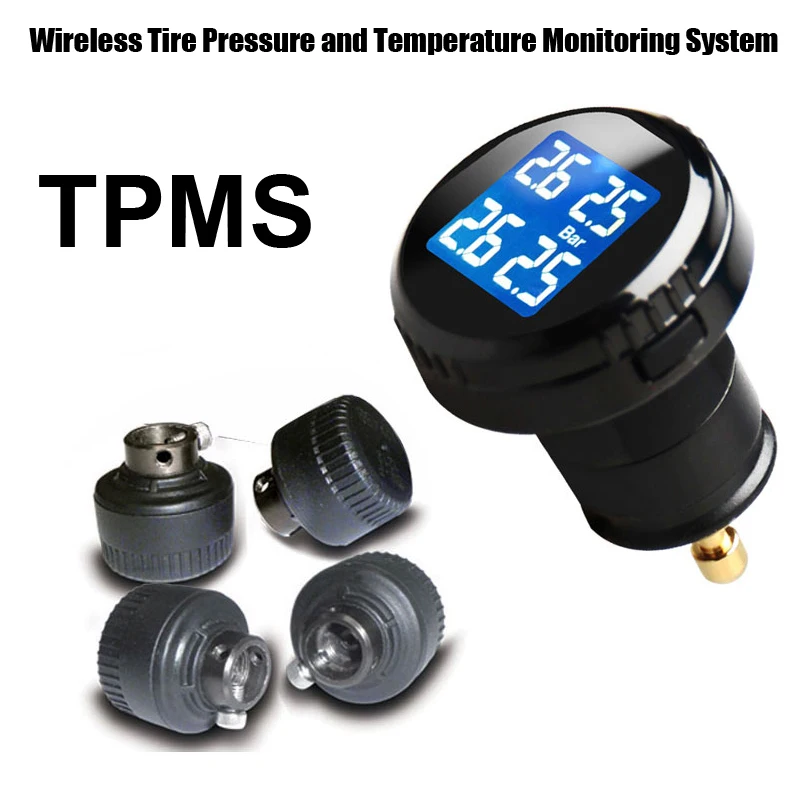 However, these are known to malfunction and completely break down which poses the question can tire pressure sensors be disabled?
However, these are known to malfunction and completely break down which poses the question can tire pressure sensors be disabled?
What's In This Guide?
Tire pressure sensors can be disabled, but this is not something you should be doing as you are getting rid of a government-mandated safety system. This means that you should either repair a non-working TPMS or completely replace it. If you do decide you want to turn it off completely, you can do so in a few different ways we certainly do not recommend doing.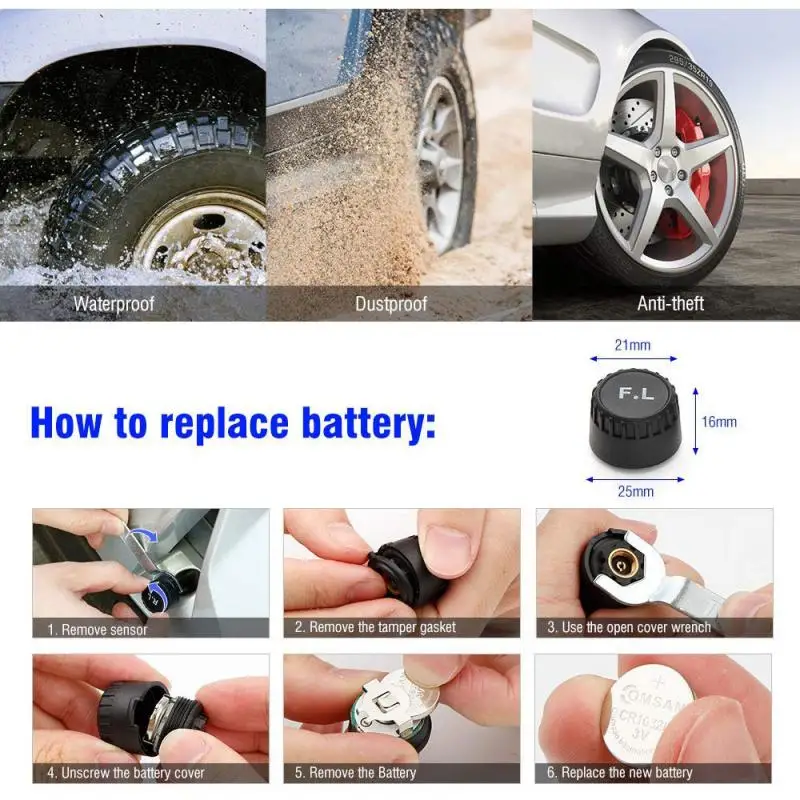
The 2000 U.S. TREAD (Transportation Recall Enhancement, Accountability, and Documentation) Act and its successive precedents strictly forbid you from tampering with or disabling the system in any way. This means that if anything happens and if it can be traced to disabled TPMS in any way, you are likely going to be liable for damages.
Back in the 2000s, 6.5 million Firestone tires were recalled after many people complained that these supposedly played a role in multiple accidents that occurred up until then. Some say that these accidents also played a huge role in the above-mentioned TREAD act. The act states that all cars must come with functioning TPMS 2 years after the Act came into force.
The act states that all cars must come with functioning TPMS 2 years after the Act came into force.
According to multiple legal and non-legal sources online, voluntary disabling/bypassing these sensors is illegal. Therefore, many experienced and prominent tire shops are likely to refuse to disable TPM sensors on cars that are being driven on public roads. This means that if an accident occurs, and if such an accident can be traced to voluntarily disabled TPM sensors, there is a great deal of chance that you will be liable for damages.
Is It Unsafe To Drive With Disabled Tire Pressure Monitoring Sensors?Driving with disabled TPM sensors is dangerous if anything happens with your tires. However, the issue here is that you are not going to be able to tell if something is wrong with your tire air pressure if you don’t have a functioning corresponding sensor to tell you that. As such, even though it does not seem like it is dangerous at first glance, it sure can be.
Although some people say that you can always keep an eye out on your tire air pressure levels simply by inspecting your tires regularly, one can’t do that while driving. It’s reasonable to assume that your tires are in their most vulnerable state while driving, especially on the highway where you can’t pay attention to your tire air pressure levels, not without TPMS.
Does Disabling TPMS Void My Warranty?There is a great deal of chance that you can void your warranty if you voluntarily disable your TPM sensors. One thing is for certain, your TPM sensors are gone, so they can’t be covered with a warranty in any way. Your tires are also likely not going to be covered by a warranty because they lack essential safety systems.
Thirdly, your car’s warranty could also be at risk, especially if the damages/faults occur due to the TPM sensor being turned off. The bottom line is that no one is likely going to cover any repair costs if they don’t have to.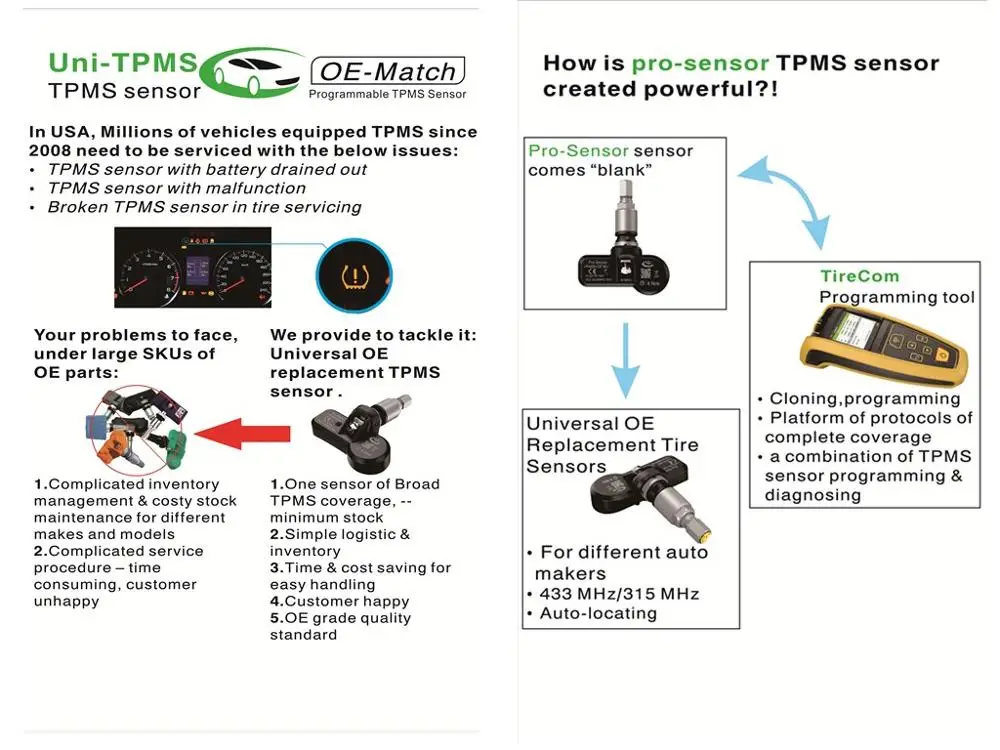 This means that if they do realize that those repair costs are associated with you turning off your TPMS, your warranty will be gone.
This means that if they do realize that those repair costs are associated with you turning off your TPMS, your warranty will be gone.
As years go by, cars are becoming smarter and smarter which means that they are packed with a growing number of sensors each year. Some recent estimates state that modern-day cars have more than 100 sensors working at all times to ensure that everything is working as intended by both the law, and the manufacturer.
Therefore, if any of these stop functioning, a specific vital safety/performance/comfort feature is going to be impaired which inherently increases the chance of having an accident. According to NHTSA, more than 20% of all car accidents are directly linked to tire inflation which can not be properly checked without a tire pressure monitoring sensor.
Most people replace their tire pressure monitoring sensors whenever needed which means whenever your existing ones go wrong.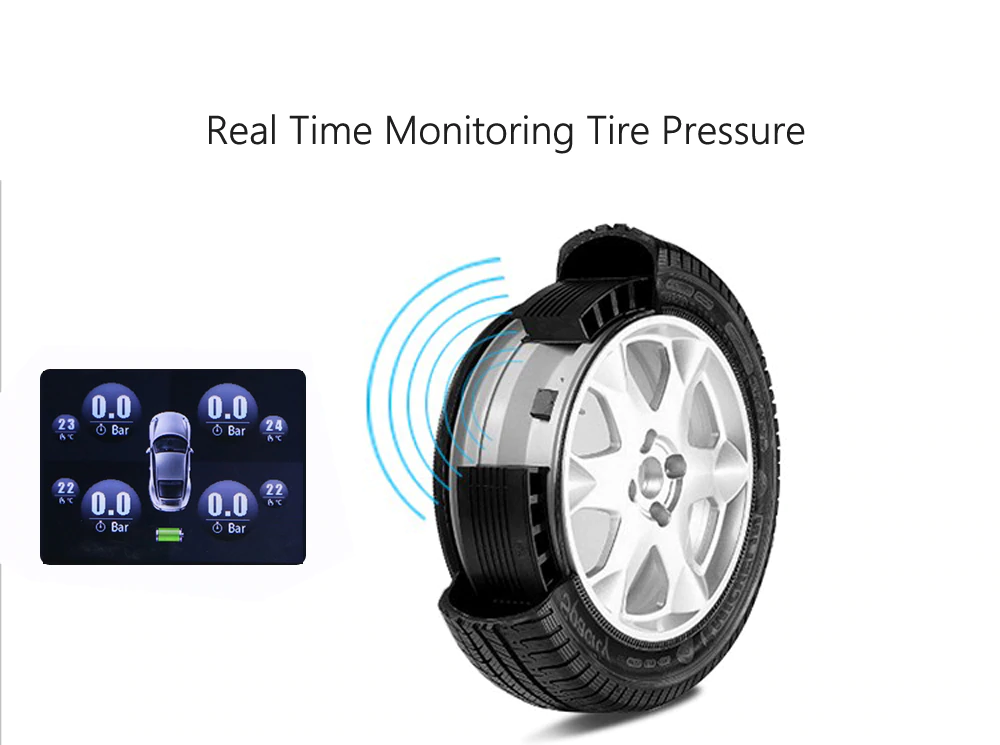 Most TPM sensors should last anywhere between 5-10 years depending on the type, the condition they are in, and many other factors. Replacing a TPMS usually takes around 10 minutes to an hour depending on who is doing it.
Most TPM sensors should last anywhere between 5-10 years depending on the type, the condition they are in, and many other factors. Replacing a TPMS usually takes around 10 minutes to an hour depending on who is doing it.
The costs associated with replacing all four sensors are likely to be in the vicinity of $150, but these costs do tend to vary depending on the manufacturer, the installation costs, and the availability of parts. Either way, replacing them is a good idea, no matter what anyone else says because you do not want to skimp out on a government-mandated safety gadget.
There are a few different ones how one can disable TPMS such as physically removing them, cutting the power needed for them to function, or using a bypass emulator. These emulators connect to your car wirelessly and can completely bypass the TPMS signal in about 15 minutes. These work both with and without physical tire pressure sensors within the tire.
The good thing about these emulators is that they are not hard-wired to your car and that they only function while within the car. The moment you take the emulator away from the car, the system reverts to normal and everything is good to go. As such, these are designed to pass annual tests such as MOT, and NCT simply by removing the emulator from the car.
As mentioned a few times, we do not recommend you do anything to your car that could cause you harm down the line. As such, if you are really willing to do it, be sure to talk to someone with decent experience so you can do it the best way possible.
One of the most common reasons why TPM sensors tend to fail is due to a dying battery. Tire pressure monitoring sensor batteries typically start declining after 5-6 years, and they sometimes decline rapidly. At one point, the battery will die and it will prompt up the dashboard warning light. At this point you have two options, the first one is to try to fix it, and the other one is to simply get a new one.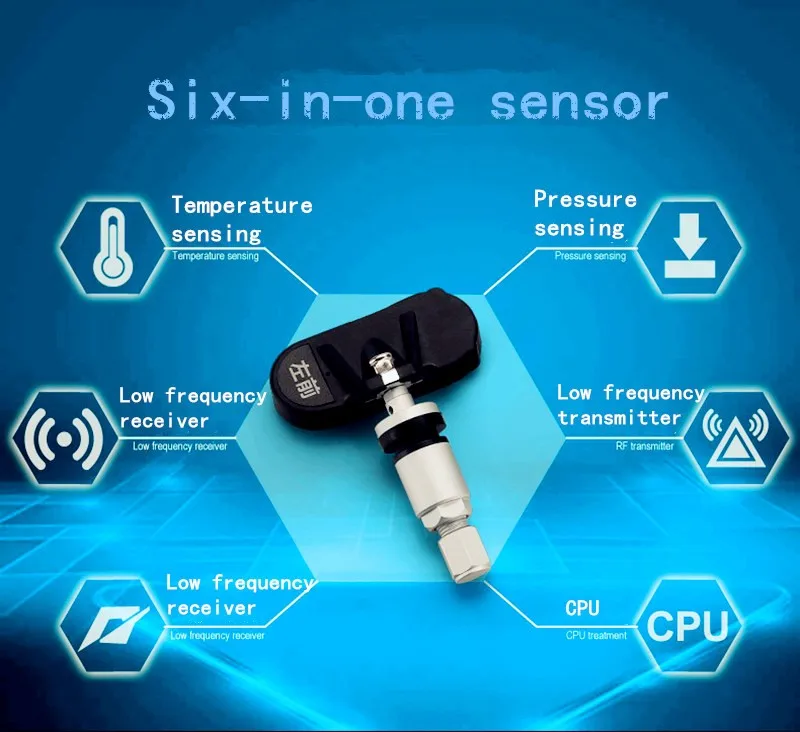
Fixing a TPMS depends on what caused it to fail in the first place. If the sensor got damaged physically and is no longer usable, you can’t repair it and you should not attempt to. If the sensor is corroded, you will have to clean out the corrosion carefully so as not to damage the sensor and try to reset the system. You can also read the car’s trouble codes to see what could potentially be wrong with the sensors.
You can technically only replace the battery, but given the fact that you need to remove the entire wheel to do it, it’s just best to replace the entire sensor if the battery died after 7-8 years of use. If the battery died after just a few years, and if everything is okay with the sensor, you should explore the option of replacing just the battery.
A properly functioning tire does not last forever which means that at some point, you are likely going to run into trouble of some kind. In order to be prepared for it, be sure to check the tire air pressure at least once or twice per month, but if you own a performance car, be sure to check your tire pressure after every serious joyride.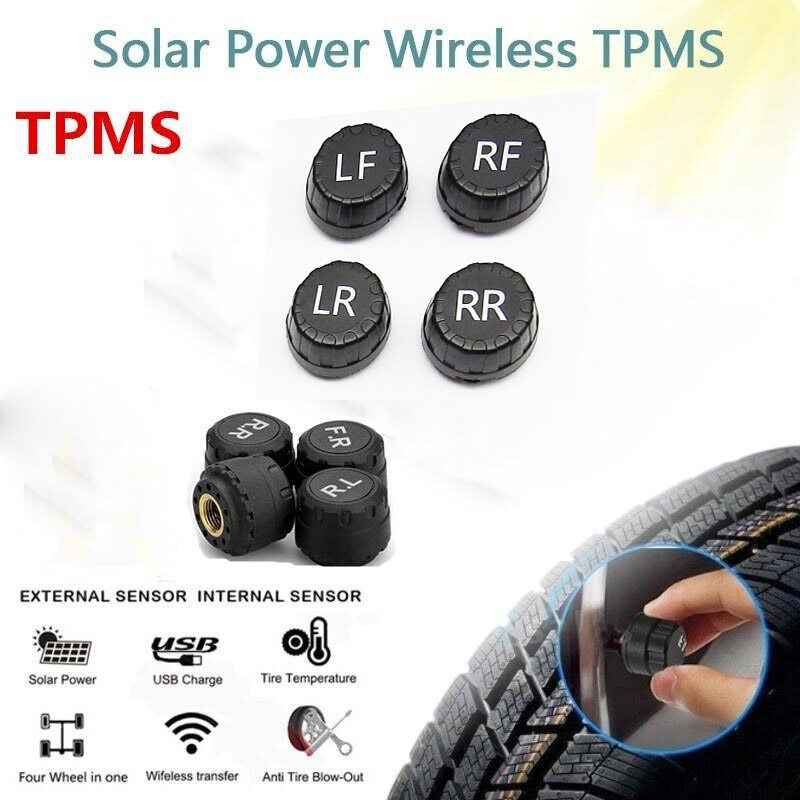
If you don’t have a gauge readily available, be sure to click here where we tell you how you can check your air pressure levels without a gauge. All in all, if you do decide to disable the TPMS, you need to be extra careful, so much so that it does not make any sense to do so in the first place.
At this point, you are aware that you can indeed disable or bypass the tire pressure monitoring sensors, but you are also aware that that’s not something you should be doing. TPM sensors are a crucial aspect of on-road safety because tire inflation-related crashes make up for a staggeringly high percentage of all car crashes in general. You can never be as effective at checking your tire air pressure levels as a dedicated sensor can.
If you think that your tire pressure monitoring sensors are fine, but you are still getting the dashboard warning light, read this.
The TPMS system is designed to constantly monitor the degree of inflation of tires.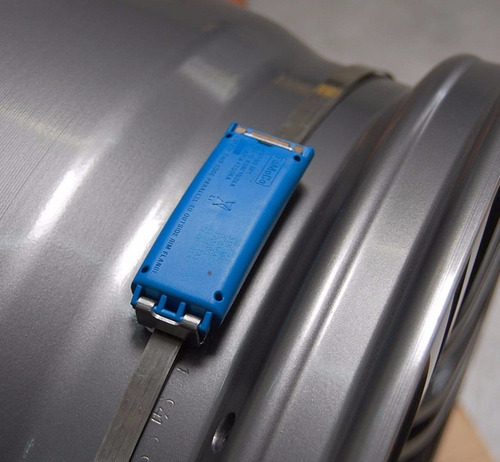 Due to frequent errors or malfunctions, some drivers want to disable tire pressure sensors to avoid constant maintenance and problems.
Due to frequent errors or malfunctions, some drivers want to disable tire pressure sensors to avoid constant maintenance and problems.
Contents
To understand how and why this is done, you should understand the design of the device and the principle of its operation. The skate inflation control system contains several interconnected blocks:
Principle of operation - pressure sensors monitor the degree of tire inflation in real time. When the boost drops below a predetermined level, the controller is triggered, the signal is sent to the block, where it is processed into pulses that are understandable for indication.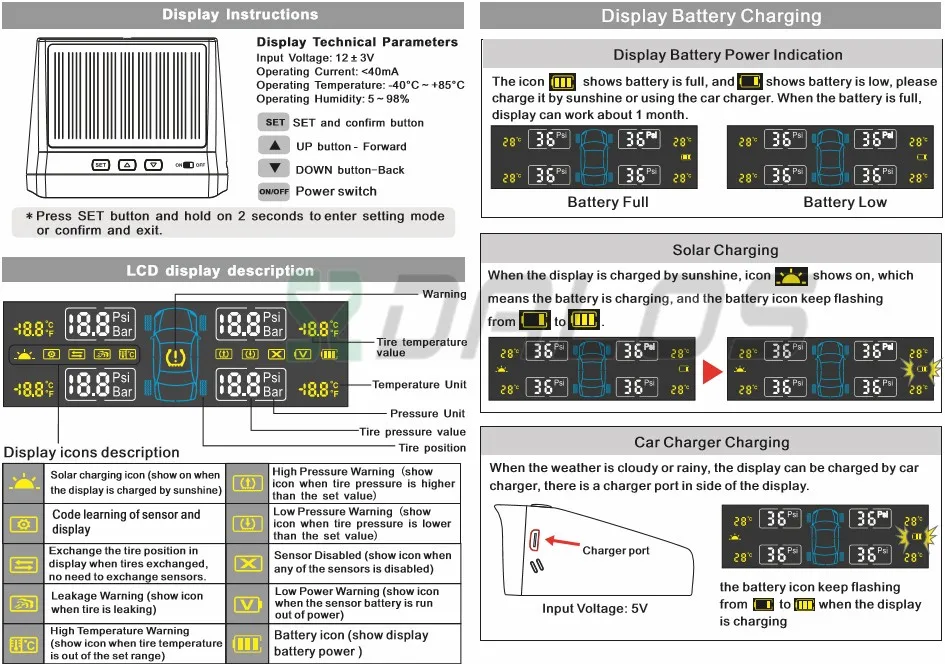 Information is displayed on the dashboard.
Information is displayed on the dashboard.
The control system displays a malfunction on the panel by means of a special light bulb. The module signals to the driver that the pressure in one or more tires has dropped below the required level. This may indicate the presence of a puncture or severe damage to the tire.
The design and operation of the sensors are primitive. To perform diagnostics of the part, it is enough to execute:
If the TPMS module icon does not go out, you will need to disassemble the wheels and examine the status of the sensors in detail. The sensor is removed from the seat and inspected. If there are no visual violations, and the element refuses to work normally, it is recommended to change the battery in the device case. nine0005
nine0005
Note! On some types of sensors, the power supply cannot be replaced. Such sensors are replaced immediately.
Calibration is not required for most element types. Devices from the factory are produced completely ready for operation. To activate them, you need to install them in the wheel and the system independently reads new sensors.
In some modifications, you will need to make pairings in manual mode. Each sensor has a serial number. It is driven into the corresponding menu field of the on-board computer, after which it is installed in the tire. nine0005
There may be several reasons.
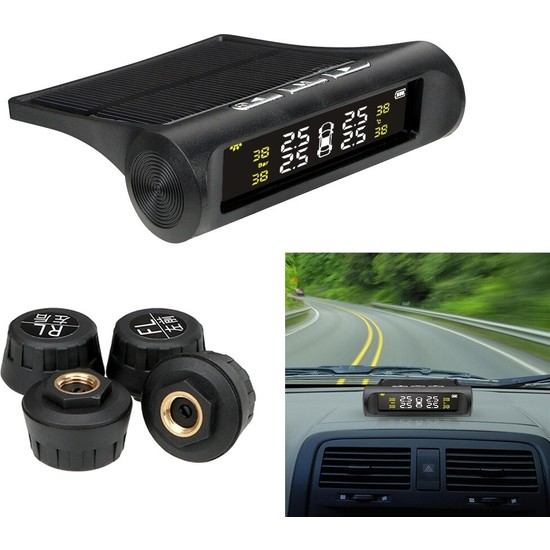
The pressure sensor cannot be disabled by standard methods. There is no such option in the on-board computer. A flashing and “cutting out” of a part of the program code is in progress. nine0005
Some BCs have this feature. To deactivate - you need to press the desired button.
When a flat tire is detected, the sensors will signal a loss of pressure. In some cars like Toyota, the sensors are turned off forcibly. Practiced on off-road vehicles, where the tires are bled to make it easier to overcome obstacles.
The fault code is cleared automatically. To remove the indication, you will need to pump up the wheels to a predetermined level and drive the car for about 10 kilometers. nine0005
On some versions of the car, in order to reset the counter, you need to enter the settings menu on the dashboard. Then proceed according to the instructions.
Then proceed according to the instructions.
To use the button correctly, first read the manufacturer's instructions. The button is located on the dashboard or near the steering rack.
If the indicator lamp appears and does not go out, there are two reasons.
It is possible for the indication to appear when the driver has put on the spare tire. Some machines have 5 sensors. If one of them is outside the vehicle, the system will consider it as a breakdown.
Causes:
 It is enough to raise the pumping to the required indicator.
It is enough to raise the pumping to the required indicator. On many vehicles, the option to force the sensors to turn off is not provided and is performed only by changing the software.
Leave a review
Save article:
The article says:
When the tires are optimally inflated, the low tire pressure indicator (TPMS) does not light up on the vehicle's dashboard. However, in some cases, it lights up even if the pressure is normal. This can't help but be annoying, especially when the tires are inflated normally. In our article today, we will figure out how to reset a tire pressure error. nine0005
However, in some cases, it lights up even if the pressure is normal. This can't help but be annoying, especially when the tires are inflated normally. In our article today, we will figure out how to reset a tire pressure error. nine0005
American and European scientists conducted a study, during which it was found that most drivers do not check whether the wheels are properly inflated before getting behind the wheel of a car. Only 40% of car owners perform such a check - and even then only once every 12 months. This is the reason for a large number of accidents.
The TPMS (Tyre pressure monitoring system) system is designed to monitor tire pressure, as well as warn of a malfunction. If the tires are under-inflated or over-inflated, an error will be displayed on the remote control or an audible signal will appear. nine0005
What is dangerous too high or, conversely, low pressure? The risk of an accident increases, the car begins to consume more fuel, in addition, the rubber wears out faster.
Photo: Shutterstock
The above devices operate on the same principle. Let's figure out how information about what tire pressure gets to the control panel.
 7–3.2 bar.
7–3.2 bar. Consider how pressure is calculated by measuring instruments. Typically, the sensor performs a comparison of the angular rotation of the wheel. Knowing the value of this parameter, you can calculate the distance that the wheel will travel in one rotation. nine0005
Obviously, if the tires are under-inflated or over-inflated, then the outer diameter of the wheel will be different. Visually, a person cannot determine this change. But the sensor notices even such changes. The system fixes non-compliance with the required parameters.
The sensor will still respond, despite the fact that the circumference of the wheel has changed quite a bit. In this situation, it is necessary to find out what mechanical reason led to this. Only in this way can you eliminate the incorrect interpretation of the signals transmitted by the system. This can happen because: nine0005
This can happen because: nine0005
Also, the TPMS system gives an error when you install new wheels or rearrange them.
When, after these steps, a tire pressure error appeared, indicating unbalance, you should reset the settings, and then set the basic parameters. In this case, the control signal may remain even if the basic settings have been selected. nine0005
Why such problems may occur:
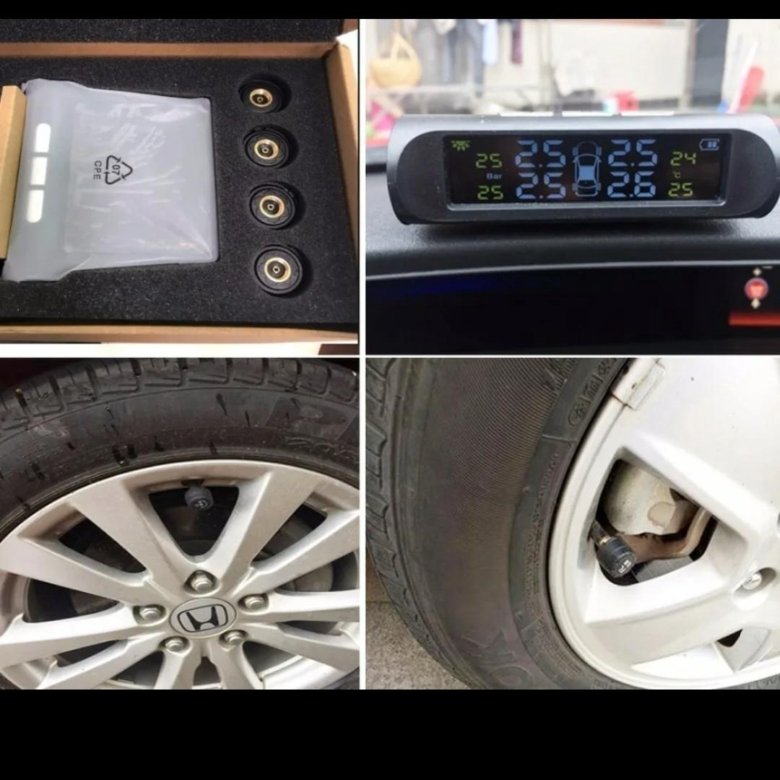 Some wheel is under-inflated or vice versa.
Some wheel is under-inflated or vice versa.
See also
"Velcro or spikes: which rubber is better for the Russian winter"
Read more
How to reset tire pressure error? To begin with, imagine that the TPMS system is working properly and the blinking light indicates a problem with the undercarriage of the machine. The first thing you should do is slowly release the gas. You can not brake sharply, turn the steering wheel. After the car has stopped, inspect the tires to make sure the rubber is not punctured or broken.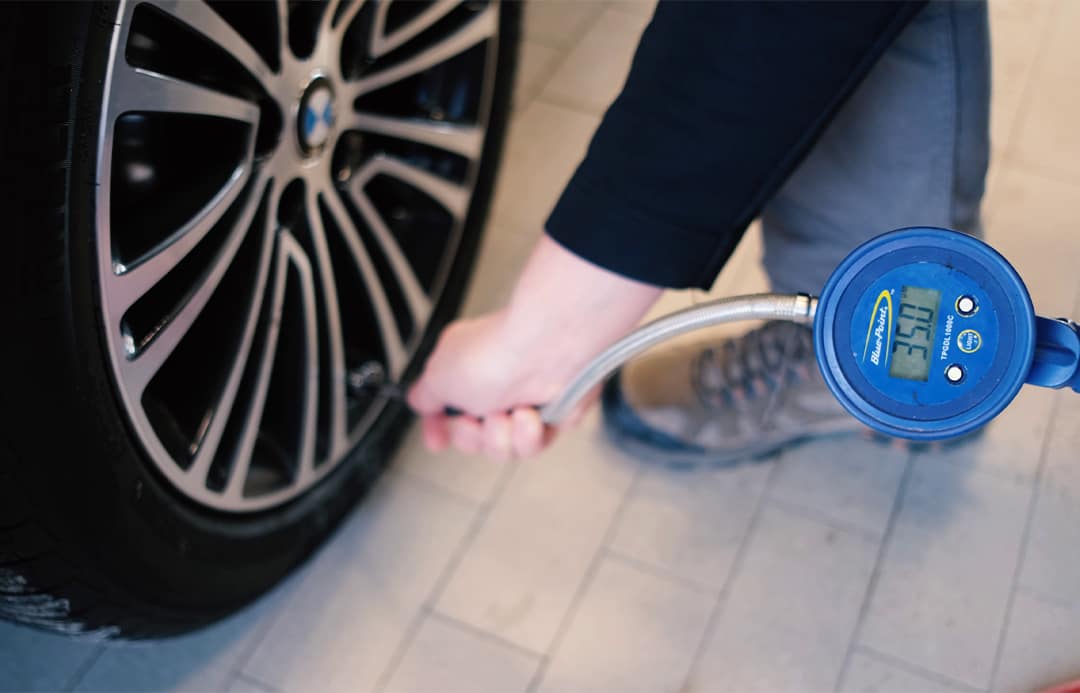 Then you can check if the tire pressure is normal. nine0005
Then you can check if the tire pressure is normal. nine0005
Pay attention! The TPMS will not always show a tire pressure error. For example, if the tires are slowly deflating, the system will not inform you about the problem. In the same way, she will not notice the error if the tire pressure starts to drop rapidly. This usually happens when a tire ruptures. This feature of the TPMS system is explained by the specifics of identifying and counting nonconformities.
However, in some cases, it happens that the TPMS system indicator is on, but the tires are in perfect condition. How to reset tire pressure error? We understand. nine0005
The complex TPMS system in some cases starts to work incorrectly. Usually, car owners observe the following picture: a tire pressure error is displayed on the display (the tire is underinflated), but in reality everything is fine with the wheel. You have to reset the tire pressure error. Otherwise, the TPMS system starts to work incorrectly.
Otherwise, the TPMS system starts to work incorrectly.
Photo: Shutterstock nine0005
You also have to reset the tire pressure error when there is radio interference from high voltage power lines. Or when sources of radio signals are located in the immediate vicinity. But as soon as you move away from them, the pressure error disappears and the system begins to function properly.
The reason for the malfunction may lie in the sensor, which is "failed". This damage cannot be easily repaired. How to reset a tire pressure error if the sensor flashes, while you hear a beep, lose your vigilance and find it difficult to drive a car? There are 4 ways to fix this problem. nine0005
To reset the error, pick up a speed of 80 km / h and continue driving for another 15 kilometers.
This method is the easiest to implement. If your car has this feature, then turn on the cruise control so that the speed does not change. Depending on the model of your car, you will be able to reset the tire pressure error at a speed that exceeds the specified one. After you cover a distance of 15-20 kilometers, maintaining the same speed of 80 km / h, make a stop. Turn off the motor. When you start it again, the tire pressure error will disappear. nine0005
After you cover a distance of 15-20 kilometers, maintaining the same speed of 80 km / h, make a stop. Turn off the motor. When you start it again, the tire pressure error will disappear. nine0005
Popular articles
How to choose a subwoofer for your car
19.12.2022
191
From top to bottom, obliquely: how to degrease a car body before painting
12/15/2022
132 nine0005
Chic, shine, beauty: how to remove scratches on a car with your own hands
9.12.2022
195
Without damage: how to reduce the fuel consumption of your car
11/29/2022
225
nine0039 How much do they pay for advertising on a car11/25/2022
544
Press the tire pressure monitoring system (TPMS) reset button on your car and you should be able to reset the error.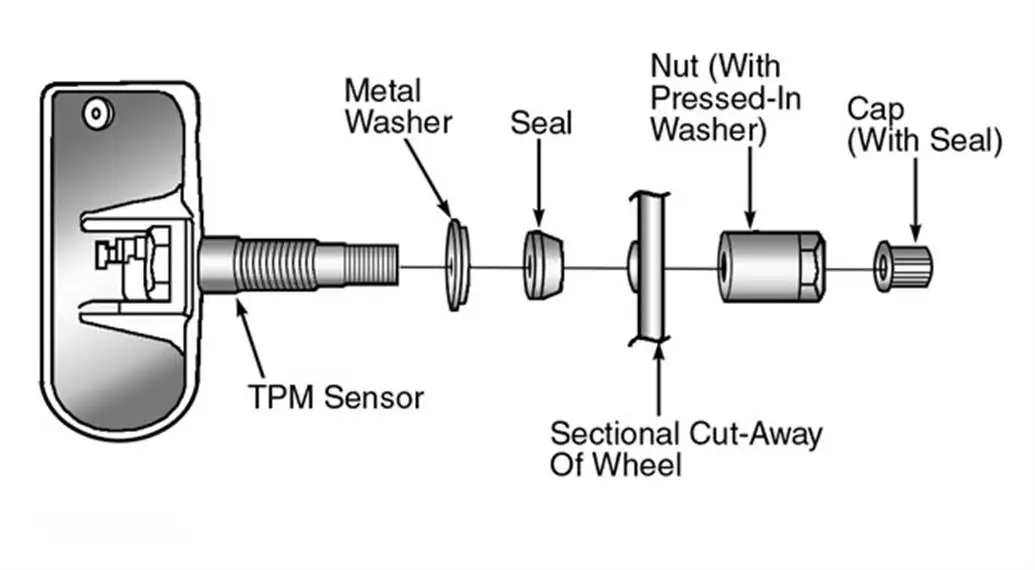
It does not matter what type of low pressure warning system is used. In any case, there will be a sensor on each wheel of your car. Sometimes it may be necessary to reboot the touch system of the car. Read the owner's manual for the vehicle. It contains information on how to reset a tire pressure error. Most often, the instructions indicate which button to press to reset. nine0005
The ignition key must be in the lock. No need to start the car, just turn it to the “on” (“ON”) position. Then press and hold the reset button, which may be under the steering wheel. We are waiting for the low pressure indicator to blink 3 times. After that, you can release the button. We start the car, it should work for 20 minutes. After this time, the computer will calibrate the sensors on the wheels. Now you can turn off the car.
nine0002 See also
""
Read more
Lower and then re-inflate the wheels.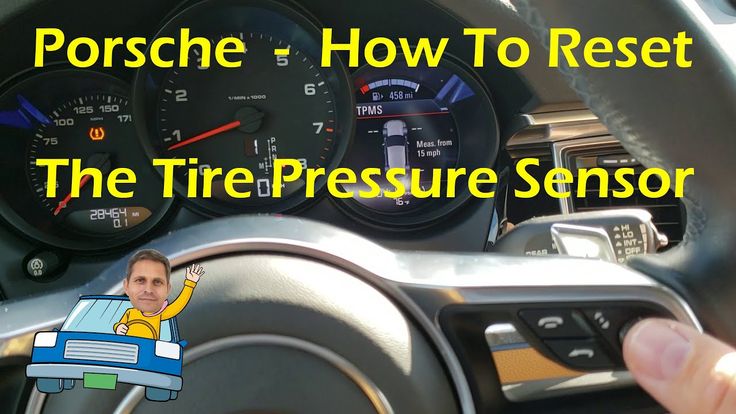
Failed to reset tire pressure error using the previous method? Then we inflate all tires to 0.2 bar, this is the pressure that should be according to the recommendations of car manufacturers. Did the error go away? Then we lower the pressure in the tires completely.
Now we pump up the wheels again. The pressure in them should be the same as indicated on the driver's door pillar or in the car's operating instructions. When there are sensors on the wheels, you need to remember about the spare tire. Now you need to drive about 3-5 kilometers, adhering to a speed of 25 km per hour. So you can reset the tire pressure error. nine0005
Remove the battery terminals and then connect it to reset the error.
Each car has a computer that receives data from all kinds of vehicle sensors, including TPMS system sensors. However, any electronics can fail. To reset the error, you will have to reboot the system, for which you need to turn off the power.
Photo: Shutterstock
To do this, open the hood. The battery is located under the hood. Disconnect the negative terminal from it. To perform this operation, use a wrench. Then sit in the driver's seat, turn the key to the "ON" position, but do not start the car. Now you need to press the signal for 3 seconds. This will use up the energy that remains in the electrical system of the machine. Then reconnect the battery. This way you can reset the error. nine0005
Sensors keep track of tire pressure. However, you need to be sure that they function properly. Of course, you do not need to constantly walk around with a special measuring device and find out the status of the sensors. It just needs to be calibrated from time to time.
It is performed quite simply. The most important thing to remember is that, depending on the make and model of your car, for each wheel there are pressure parameters strictly defined by the manufacturer for winter and summer. These values should be given to the sensors. How the installation and configuration will be performed depends on the controller used. nine0005
These values should be given to the sensors. How the installation and configuration will be performed depends on the controller used. nine0005
 Experts do not recommend using the internal controller yourself. However, additional settings are not required if the data is read using the screen that is directly on the control system.
Experts do not recommend using the internal controller yourself. However, additional settings are not required if the data is read using the screen that is directly on the control system. For current promotions on the Halva card, which will help you profitably purchase household appliances, you can follow here. nine0005
To prevent a tire pressure error from appearing, it is important to calibrate (adjust the TPMS system) every time a change is made. For example, when you installed a new set of wheels, repaired tires, did balancing, and the like. Using TPMS controllers is quite simple. The main thing is to read the instructions for use of the device. And make sure that the tire pressure is the one recommended by the car manufacturer.
nine0002 See also
"What tires can be put on rims 14, 15 and 16: professional advice"
Read more
Every car owner gets annoyed if the tire pressure error icon lights up on the dashboard.